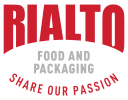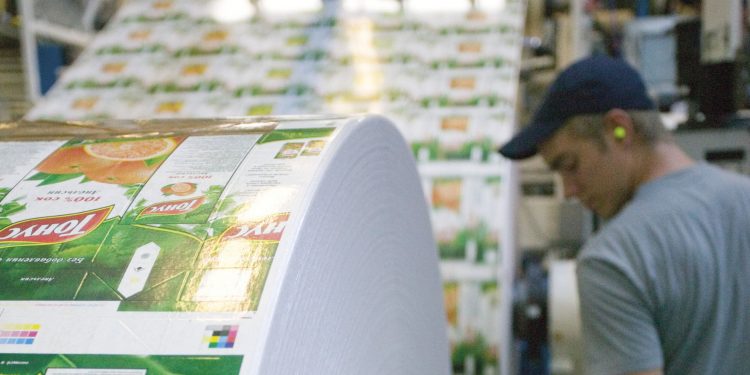We frequently hear the terms “sustainability, recyclable, closed loop economy, EPR fees” spoken, but what does it mean to the man on the street?
The actual definition of sustainability is “meeting the needs of the present without compromising the ability of future generations to meet their own needs” (Brundtland Commission). In simple terms for example only cutting enough trees per year that can be regrown. Sustainable practices assume that resources are limited and have the long-term view to use the available resources wisely to prevent negative consequences for generations to come. The three main components of sustainability are the economy, the society, and the environment, informally referred to as profit, people and planet. All three components need to be considered to achieve a sustainable result. “As the global population of approximately 7.8 billion grows, more packaging will be required. And if we continue the current trajectory of natural resource use, then by 2050 we’ll require at least three planet earths. If the packaging value chain starts doing its part and using the correct materials that are recyclable and fit-for-purpose, then a different one-earth path is possible.” (Pierre Pienaar WPO president)
In our previous newsletter we touched on the choice of packaging available on the market. The recycling of packaging and reuse of recycled material for packaging plays an important part in the sustainability status of a manufacturer/producer/supplier to the market. During 2019 the recycling of polystyrene increased by 19%. According to Adri Spangenberg (CEO of the Polystyrene Association of SA) despite negative factors like increase in electricity, labour, and fuel costs the tonnage of reprocessing polystyrene was increased.
More than 450 tons of polystyrene is recycled every month in South Africa, one of highest recycling rates of polystyrene in the world. The décor market uses 42% of the recycled EPS (expanded polystyrene) packaging material to make picture frames, skirtings etc. Another trend that was noted was the increasing demand from the building and construction industries to use PCR (post-consumer recycled) polystyrene mixed with cement to make light weight bricks.
Coca-Cola Beverages South Africa rolled out in the Eastern Cape a 2-litre returnable PET bottle. The bottles were made with higher density and therefore could be reused 14 times. The trials proved to be successful, and the project will be expanded to other parts of the country. “This launch is one way in which CCBSA is investing in innovative and more sustainable packaging” says Velaphi Ratshefola (MD of CCBSA). In 2019, 95879 tons of post-consumer PET beverage bottles were collected for recycling and provided 65 900 job opportunities among informal reclaimers and SMME’s.
In the past, a large portion of rPET material was used to manufacture beverage bottles. Recently Mpact Versapack has expanded the use of rPET to thermoformed products like punnets. “Mpact Versapack is contributing to sustainable solutions and paving the way for leading brand owners to follow” says Wessel Oelofse (MD).
Most of the recovered paper in South Africa comes from corrugated and carton board boxes. In 2019 only 10% of the recovery rate came from beverage cartons. In 2019 the amount of recovered paper diverted from landfills saved 3.6 million cubic metres of landfill space.
To reduce the impact of packaging on the environment, it is advisable to look at the life-cycle assessment of the product and to create a closed-loop or circular economy. A local example is Woolworths. The paper bags are locally manufactured from FSC-certified recycled content source and Woolworths sends its recyclable cardboard and paper back to the same paper mill.
To tackle the global plastic pollution problem is not only the responsibility of the consumer but we need to look at all the links in the supply chain to rectify the current situation by adapting or changing the choice of packaging. Pressure and changes have been legislated by governments globally to curb this pollution problem by banning certain single-use plastic items. In January 2018, the EU published a plastic strategy which outlined a need for a legislative proposal on single-use plastic. On 3 July 2021, the ban on plastic cutlery, plates and straws will be enforced in the EU countries.
Last year in November, legislation regarding the mandatory Extended Producer Responsibility fees was gazetted. The mandatory EPR provides incentives to prevent waste at source, promote and improve product design and choice of materials impact on the environment, support recycling programmes and waste management targets. Section 18 refers to the EPR aspect of the National Environmental Management Waste Act (NEMWA) and replaces Section 28(Industry Waste Management Plans) from 2017 (Cheri Scholtz PETCO’s CEO).
In the legislation there is reference to the “producer”. Who is the producer? Globally the producer is seen as the brand owner, the retailer, the importer, or agent. It is the producer who is responsible for placing the packaging onto the local market and therefore by the regulations in terms of Section 18 responsible for EPR fees. “In line with global practice, the producer is the organisation that has the greatest control in terms of selecting materials and designs, or that chooses to make or sell an item in a given format” (David Drew PETCO Director).
Changes or improvements to existing products or packaging can result in increased recyclability of product, reduction of undesirable materials and less payable EPR fees.
The responsibilities of the producer under the new legislation are to either form or join a PRO (Producer Responsibility Organization), calculate, and declare products sold locally to the PRO and pay the required EPR fees to the PRO. The responsibilities of the PRO on the other hand are to support and focus on the recycling value chain, developing guidelines to improve product designs to its members, reporting on market information, educating consumers and being accountable for the efficient usage of funds received from members.
Currently there are a few “grey areas” that need clarification from the government (DEFF) and PRO’s are attending workshops with the minister and her team to resolve outstanding issues. Since the 5 November 2020 further notices dated 15 January 2021 and 19 March 2021 have been gazetted. (www.environment.gov.za/legislation/gazetted_notices)
At Multi-cup Solutions we are well aware of our responsibility concerning our environment. We as a company have joined PRO’s and are voluntary paying EPR fees as our contribution to improve the way packaging material is dealt with on the South African market.
In addition, at Multi-cup Solutions we have noted and aligned ourselves with the global trends of offering sustainable alternatives to the packaging requirements of the eco-conscious consumer. As a well-established disposable packaging supplier, we offer a wide range of disposable, eco-sensitive, compostable, and biodegradable food and beverage packaging options to our customers, meeting the requirements of the eco-conscious market. Contact your representative or browse our website for more details on our products.









Leave A Comment
You must be logged in to post a comment.